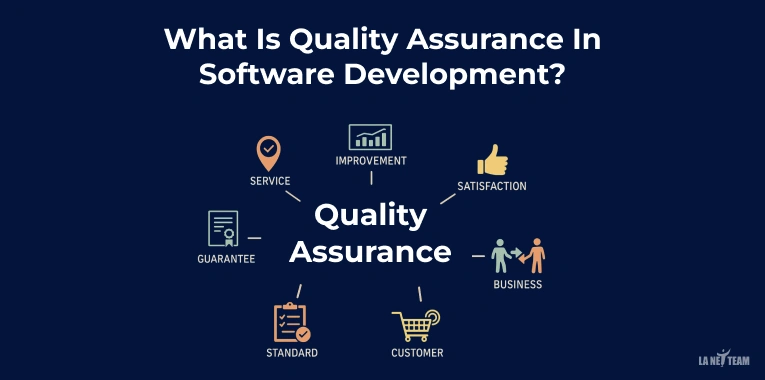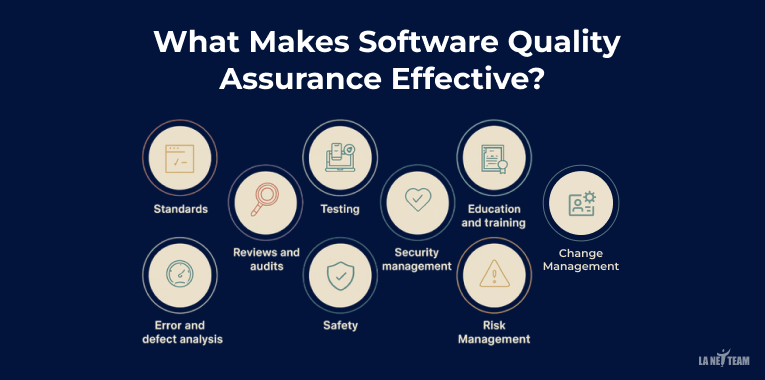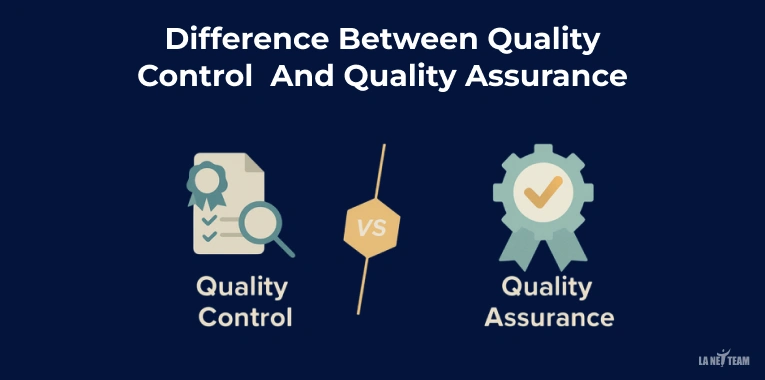At first, I used to think quality assurance in software was just about ‘fixing bugs’. But when I worked on a project, I saw how important and detailed it is.
Let’s say you are downloading an app that keeps crashing the moment you open it. That’s frustrating, right?
That’s exactly why we need Quality assurance in software development.
Quality assurance makes sure the software runs smoothly, feels reliable, and gives users a reason to come back.
In fact, a recent survey shows that nearly 88% of users never return to an app after just two bad experiences.
Quality Assurance in Software Development: Definition

Quality assurance in software development is a process of making sure software meets set standards of quality before it reaches users. Activities that ensure its quality are checking processes, procedures, and standards.
With QA, you no longer need to wait until the end to find bugs, it runs alongside development to improve the process and catch the issue before.
What Makes Software Quality Assurance Effective?

Here is what managers and developers should focus on:
1. Standards
SQA makes sure that your teams follow the established standards in order to maintain the quality, such as IEEE or ISO.
These standards guide you on how software is built and documented, so the results are consistent and of high quality. Additionally, it also helps in reducing errors and makes processes predictable.
2. Reviews and audits
By regularly reviewing, you can catch mistakes early, while regularly auditing ensures processes are followed.
Together, they help in saving a lot of time and money by fixing issues before they grow into bigger problems.
3. Testing
Testing is the core of SQA. This element’s mail goal is to find errors before users do.
By following quality assurance standards, you can make your testing well planned and run software efficiently. Not just this, it also prevents bad user experience and reduces costly fixes later.
4. Error and defect analysis
Software quality assurance not just fixes bugs but studies them in detail. By tracking and analyzing errors, teams learn where mistakes usually happen.
This information then helps in improving processes, reducing repeated issues, and building better software over time.
5. Change management
Software constantly changes due to the addition of new features, bug fixing, and new updates. SQA ensures every change is properly documented, reviewed, and approved.
As a result, it avoids confusion, prevents accidental errors, and keeps projects running smoothly.
6. Education and training
Great software is built by skilled people. SQA leads training for developers, managers, and stakeholders so everyone knows how to build better and safer software.
When developers and managers learn and get trained, they end up writing better code and avoiding common pitfalls.
7. Security management
Strong security checks help in protecting your user data and preventing breaches. SQA checks that security best practices are followed.
This includes preventing common vulnerabilities, protecting user data, and ensuring compliance with security standards. With the rising cyber threats, security management becomes very critical.
8. Safety
In high-stakes industries like healthcare, aviation, industries control, software errors can cause real harm. SQA assesses potential risk, designs safeguards, and works to reduce the impact of failures. Therefore, safety is non-negotiable in these cases.
9. Risk Management
Every project involves risks. Over here, the risk means delays, cost overburns, technical failures, etc. By security quality assurance, you can identify these risks and ensure backup plans are ready. This helps teams stay prepared, make better decisions, and reduce nasty surprises.
Best Tools For Software Quality Assurance

Security quality assurance employs a number of tools to ensure that the software is functioning properly, free of bugs, and adhering to quality standards. The tools listed below will assist you with automating the process of testing and managing processes, as well as, checking codes and keeping teams on track.
1. Test management tools: These are used to manage and monitor testing. Examples would be the generation of test cases, their execution, and the presentation of results. In the absence of this tool, your team may skip steps, do the same jobs, or lose track of bugs.
- Test rail
- Quality center/ALM
- Zephyr
2. Automated testing tools: By the name of the tool, you can recognize it helps in automatically running tests to make sure new changes don’t break anything.
Manual testing is slow and error-prone, this is where automation ensures repeated tests are accurate and fast.
- Selenium
- JUnit/TestNG
- Cypress
3. Static analysis tools: These tools analyze source code before it is run to find potential security vulnerabilities, bugs, and other code quality issues.
It matters as it helps in catching problems earlier, which saves time and prevents serious issues later.
- SonarQube
- Fortify Static Code Analyzer
- ESLint
4. Performance testing tools: These tools are used to stimulate user access to applications. In order to understand the behavior of the application under different conditions.
Performance testing tools help you in ensuring software can handle heavy usage without crashing or slowing down.
- JMeter
- Load Runner
- Gatling
5. Code coverage tools: Code coverage tools show how thoroughly a program is tested by identifying code that the test didn’t reach. With these tools, you get to identify the untested parts of the code, which could hide bugs.
- Cobertura
- Istanbul
- JaCoCo
6. Issue tracking and collaboration tools: Effective SQA requires constant communication and collaboration, especially when issues need to be tracked and resolved systematically. These tools help teams track bugs and work together efficiently.
- Jira
- Trello
- Asana
Difference Between Quality Assurance And Quality Control

In software development, both QA and QC aim to deliver high-quality products. But they are both really different. Let’s break it down:
| Aspect | Quality Assurance | Quality Control |
|---|---|---|
| Focus | Focuses on building quality into the process. | Focuses on finding issues in the finished product. |
| Objective | Identify and rectify the defects in the processes. | Find and fix the defect in the product. |
| Approach | Proactive and preventive | Reactive and corrective |
| Orientation | Checks if the process follows standards and best practices. | Check if the product meets requirements. |
| Scope | Covers the entire software development lifecycle. | Performed after the development of the product, mainly during testing. |
| Activities | Setting standards, reviews, audits, training, and process improvement. | Unit testing, integration testing, system testing, acceptance testing, bug fixing. |
| Who is involved | Project managers, developers, testers, stakeholders. | Testers, developers, or external reviewers. |
| Timming | Happens throughout development. | Happens after the product is built. |
Wrapping Up
Quality assurance in software development is a necessity for businesses where customer trust holds first place.
Remember Nokia? It was once a mobile giant in the market. But when it failed to keep up with software expectations, users quickly moved on to better options.
The same rule applies to today’s software. If your app is full of bugs or errors, users will not wait, they will uninstall the app. Therefore, don’t just think, start working on it to stay ahead in the market.
